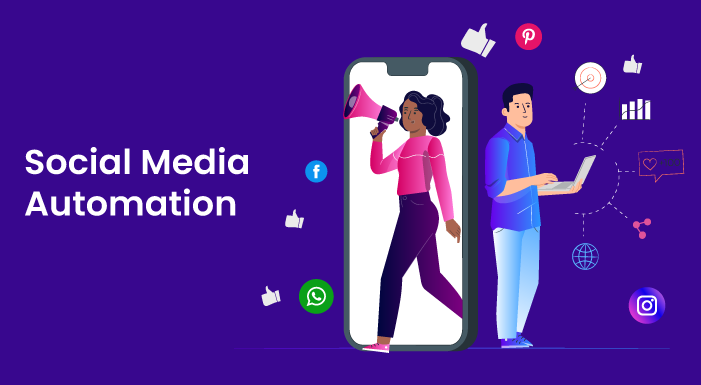Social media has become an essential tool for brand building. Whether you’re a small business, a content creator, or a large corporation, leveraging social media can significantly boost your brand’s visibility and credibility. Here’s a step-by-step guide to using social media effectively to build your brand.
1. Introduction to Social Media Branding
Social media has revolutionized the way brands communicate with their audience. It’s no longer just about broadcasting a message; it’s about creating a dialogue, building relationships, and fostering a community. By strategically using social media, you can connect with your target audience on a personal level, making your brand more relatable and trustworthy.
2. Defining Your Brand Identity
Your brand identity is the foundation of your social media strategy. It encompasses your brand’s voice, tone, visual elements, and overall personality. Consistency is key here—ensure that your brand’s messaging and visuals are uniform across all platforms. This consistency helps in building brand recognition and trust among your audience.
Brand Voice: Develop a unique tone that reflects your brand’s personality. Whether it’s casual, formal, humorous, or inspirational, your brand voice should resonate with your target audience.
Visual Identity: Use consistent colors, logos, and imagery across your social media profiles. This visual consistency helps in reinforcing your brand identity and makes your content easily recognizable.
3. Choosing the Right Platforms
Not all social media platforms serve the same purpose. Each platform has its own strengths, audience demographics, and content formats. It’s essential to choose the platforms that align with your brand’s goals and where your target audience is most active.
Instagram: Ideal for brands with strong visual content. Great for fashion, beauty, travel, and lifestyle brands.
LinkedIn: Best for B2B marketing, professional networking, and thought leadership.
Twitter: Effective for real-time engagement, customer service, and sharing updates.
Facebook: Offers a broad reach and is effective for community building and targeted advertising.
4. Content Strategy
Content is the cornerstone of your social media efforts. Your content should not only promote your products or services but also provide value to your audience. A well-planned content strategy ensures that you consistently deliver high-quality content that engages your audience and encourages interaction.
Types of Content: Experiment with different content formats such as videos, infographics, blog posts, and user-generated content.
Content Calendar: Plan your posts in advance to maintain a consistent posting schedule. A content calendar helps in organizing your content and ensures that you’re always ready with relevant posts.
5. Engaging with Your Audience using Social Media to Build Your Brand
Engagement is a two-way street. It’s not enough to just post content; you need to actively engage with your audience. Respond to comments, answer questions, and participate in conversations. This interaction fosters a sense of community and makes your audience feel valued.
Responding to Comments: Always respond to comments on your posts, whether they’re positive or negative. This shows that you care about your audience’s opinions.
User-Generated Content: Encourage your followers to create content related to your brand. This not only boosts engagement but also serves as authentic promotion for your brand.
6. Using Analytics
To maximize the effectiveness of your social media efforts, you need to track and analyze your performance. Social media analytics provide valuable insights into what’s working and what’s not, allowing you to make data-driven decisions.
Key Metrics: Monitor metrics like engagement rate, reach, impressions, follower growth, and conversions to assess the effectiveness of your strategy.
Tools: Use analytics tools like Google Analytics, Facebook Insights, and Instagram Insights to gather and analyze data.
7. Leveraging Paid Advertising
Organic reach on social media can be limited, especially for new brands. Paid advertising can help you reach a larger audience, drive traffic to your website, and increase conversions.
Targeting: Use the detailed targeting options available on social media platforms to reach specific demographics that are most likely to be interested in your brand.
Ad Types: Experiment with different ad formats such as carousel ads, video ads, and story ads to see which ones resonate most with your audience.
8. Collaborations and Influencer Marketing
Collaborating with influencers and other brands can expand your reach and introduce your brand to new audiences. Influencers already have a loyal following, and their endorsement can boost your brand’s credibility.
Finding the Right Influencers: Choose influencers who align with your brand’s values and have an audience that matches your target demographic.
Collaboration Ideas: Collaborations can include sponsored posts, giveaways, joint content creation, or brand takeovers.
9. Case Studies and Examples
Learning from other brands’ successes and failures can provide valuable insights into what works and what doesn’t. Showcase real-world examples of brands that have effectively used social media to build their brand.
Success Stories: Highlight specific brands that have successfully grown their presence on social media, discussing the strategies they used and the results they achieved.
Lessons Learned: Analyze what made these strategies successful and how you can apply similar tactics to your brand.
10. Conclusion
Building a brand on social media is an ongoing process that requires consistency, creativity, and a deep understanding of your audience. By following the steps outlined in this guide, you’ll be well on your way to creating a strong and recognizable brand presence on social media. To get in touch with INDIDIGITAL TEAM, contact at +91-9971778006, email us- contact@indidigital.com. Visit our website Indidigital or app store optimization cost you can also contact us on our Facebook handles.



